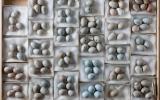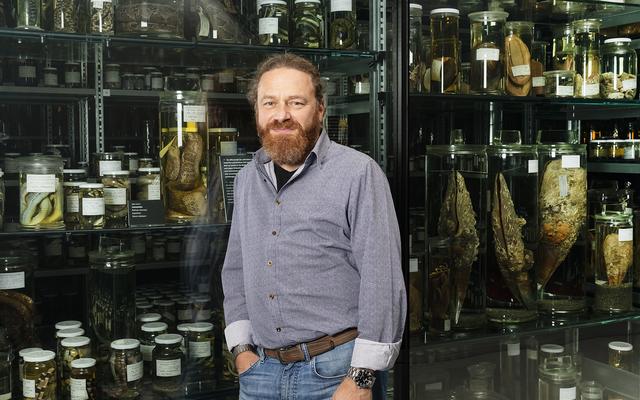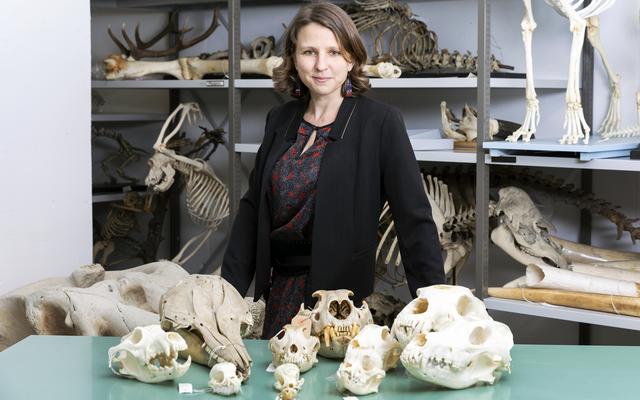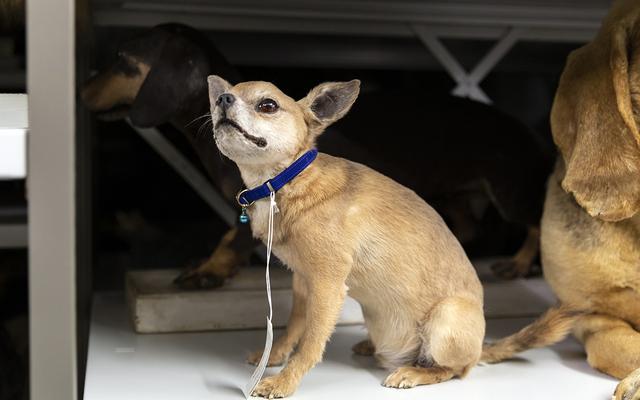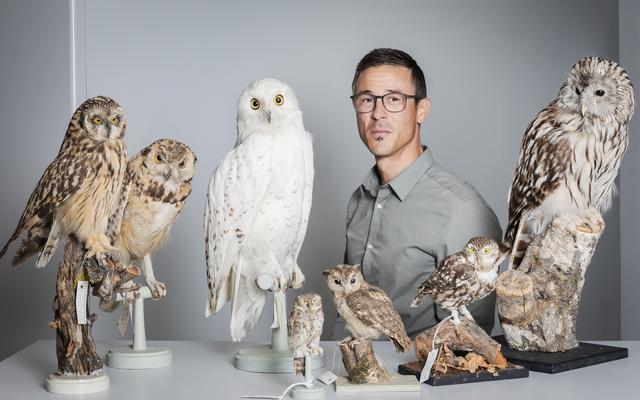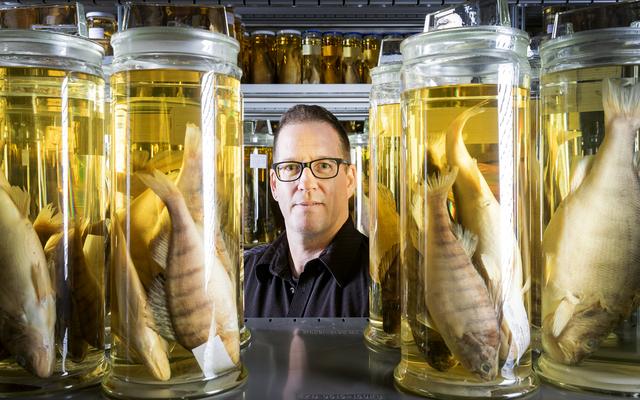The herpetology collection contains numerous wet specimens and tissue samples of the European fauna, but also from other continents. A lot of specimens come from historical collections, especially from South East Asia and South America. Current research and collection efforts focus on the diversity, evolution and biogeography of Southeast Asian amphibians.
Research Associates/Ehrenamtliche Mitarbeitende
- Dr. Kurt Grossenbacher
- Dr. Ueli Hofer
-
Reptilien der Schweiz
The mammal collection consists of skeletons, skulls, skins, mounts and tissue samples mainly from Africa, South America and Europe. It contains specimens from historical collections, earlier scientific projects, donations from authorities or private persons.
In addition, the museum houses the Albert Heim Collection, the largest scientific collection of pedigree dogs in the world. It includes about 2,800 dog skulls, 280 dog skeletons and 220 dog skins.
Research Associates/ Ehrenamtliche Mitarbeitende
- Prof. Dr. Anthony Herrel
-
Funktionsmorphologie, Website Anthony Herrel
The museum houses the largest scientific collection of pedigree dogs in the world, with about 2800 specimens. The oldest object is the world famous Saint Bernard dog „Barry“, that died in Bern in 1814. The collection was intensely extended already in the 19th century. The Albert-Heim Foundation for cynological research supports scientific research on dogs and the permanent extension of the collection. Donations from private persons of deceased pedigree dogs are welcome at all times.
The ornithological collection consists mainly of skins, mounts, skeletons, eggs and tissue samples. Geografical focuses lie on the European, in particular the Swiss, as well as the South American avifauna. Important historical material of famous ornithologists form the basis of the collection, which is still being extended nowadays.
The main strength of the ichthyological collection lies in fishes of the alpine region. Together with historical specimens, the museum houses the reference collection of the "Projet Lac", a collaborative work between the museum, the Eawag, the University of Bern, the government and the cantons of Switzerland, aimed at studying and documenting the diversity of the Swiss fish fauna. Another important focus of the collection is on Southeast Asian freshwater fishes with active fieldwork and research aimed at studying the biodiversity, evolution and biogeography of this highly diverse fauna.
In collaboration with the Archaeological Service of the Canton Berne (ADB), bones originating from archaeological excavations are evaluated. In addition to a large archaeological reference collection for species identification purposes of animal remains, the museum also has a historical reference collection from the 19th century. Animal bones from prehistorical and historical settlements are important witnesses of the way of life and the environment of our ancestors.
